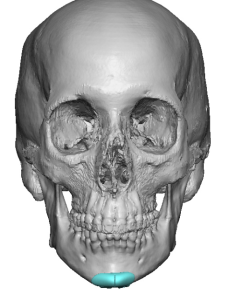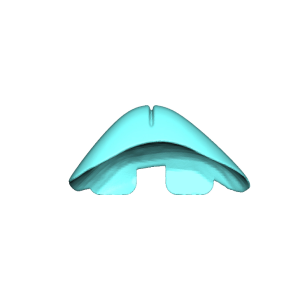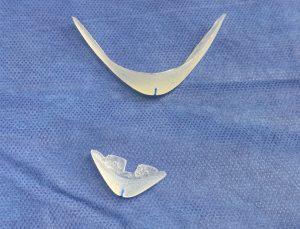Background: Chin augmentation using an implant is the most common form of facial bone enhancement. The chin implants used have been around for over 50 years. Interestedly most of the style of available chin implants styles have changed little since then. Almost all chin implants have an extended design or have long wings that extend back to blend into the sides of the chin. Their intent is to provide a smooth transition into the jawline from the extent of the forward chin projection created by the implant.
While the extended chin implant concept (aka extended anatomic chin implant) makes sense it is in some cases an over reaction to the problems off prior ‘button’ style chin implants used in the past. While it conceptually is a good idea it is not appropriate for some patients, particularly females. One of the dimensional effects of the winged style chin implants is the increase in chin width seen int the frontal view. The impact of an implant augmentation is rarely considered by surgeons but not overlooked by patients particularly females.
A specific V-shaped chin shape is a completely female chin augmentation objective. No standard chin implant style can achieve it even the anatomic non-winged implant style. It can be modified to achieve it or a custom implant design can be used to do so. But regardless is what implant approach is used, the key is the design or shape of the implant used. Because of the thickness of the overlying soft tissue chin pad, any chin implant design that seeks to obtain a week defined effect must have an exaggerated design to overcome that issue.
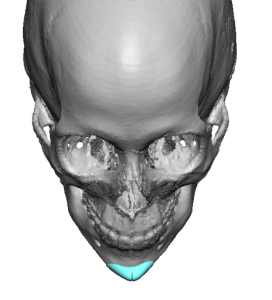
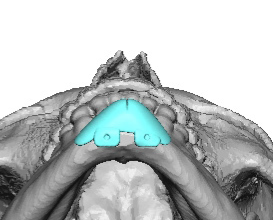
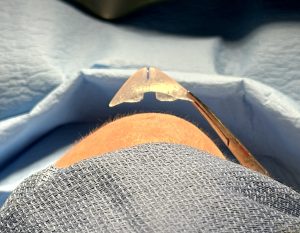
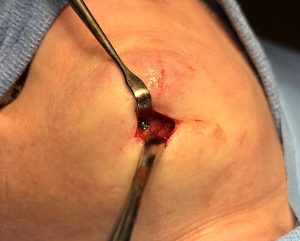
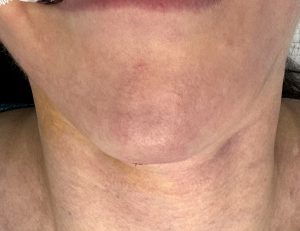
In trying to achieve a triangular or V shaped chin the implant has to have a strong angulated chin projection. As a general rule the angle at the most forward central projection should be close to 90 degrees with a defined point. Keep the width of the implant limited by having limited wings or, more importantly the implant shape from below should be an equilateral triangle.
Key Points:
1) Many women prefer s V-shaped chin augmentation result of which no standard chin implant can accomplish.
2) While a custom chin implant is the ideal approach to achieving a specific chin shape it still requires the correct design.
3) To achieve a visible V-shape to the chin the custom design must be exaggerated done overcome the thickness of the soft tissue chin pad thickness.
Dr. Barry Eppley
World-Renowned Plastic Surgeon



